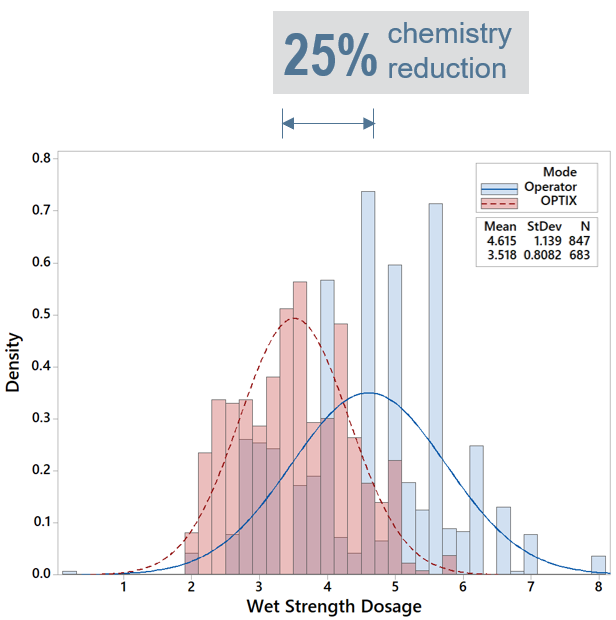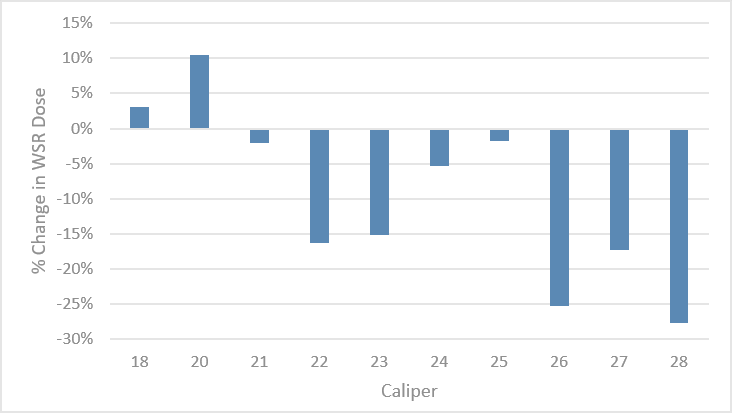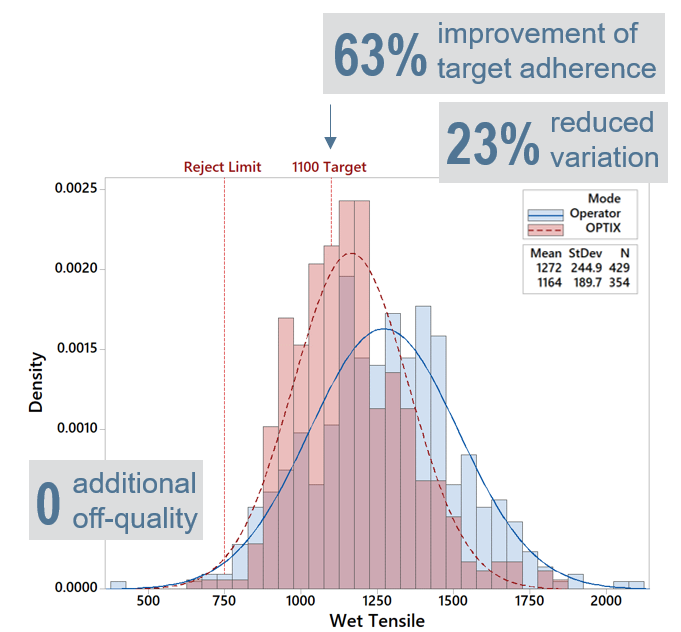The dynamically changing nature of paper manufacturing and delayed reel-to-reel quality measurements present pulp and paper mill operators one of their biggest challenges. In the modern mill, operators rely on their distributed control system (DCS) and a multitude of installed sensors to closely monitor and control their process. But the amount of data collected by this system is staggering. The typical mill can have as many as 10,000 data historian tags that can be associated through highly complex, multidimensional variable relationships. Trying to analyze this data using typical techniques and tools is nearly impossible, which makes process optimization extraordinarily difficult.
Digitalization technologies, however, are emerging as real solutions to these challenges. According to McKinsey & Company, digitalization can potentially reduce the cost base of a paper producer by 15 percent. The consulting firm estimates that 7.5 percent of that is attributable to artificial intelligence (AI) and analytics.
Given these estimates, the incorporation of AI into the pulp and paper mill is one of the industry’s highest priorities to drive continuous improvement and maintain a competitive advantage. Specifically, the use of predictive analytics positions paper mills to achieve product quality targets, optimize raw material and chemistry consumption, and increase overall process efficiency. Additional incremental value can be achieved through the fusion of AI and the control equipment or DCS.
This blog examines the benefits of AI and autonomous chemistry control and introduces what’s possible with AI systems currently on the market, such as Solenis’ own OPTIX™ Applied Intelligence platform.
The Digitalization of Papermaking
The emergence of AI as a serious tool for papermaking has not been a sudden phenomenon. In fact, it represents one phase of a gradual evolution that has been occurring for many years. At the beginning of this evolution, decades ago, was a paper mill that relied on manual systems for quality control. Laboratory testing of samples, sometimes taking 45 minutes to two hours, produced results indicating whether process adjustments were necessary. Operators made these adjustments manually and then resumed production.
Next came the era of automation, and pulp and paper mills installed sensors and monitoring systems to collect data on critical quality parameters, such as Short Span Compression Strength of Linerboard (STFI), Mullen, tensile and wet tear. Most often, this monitoring was reserved for a small number of high-priority machine assets. Technicians set control thresholds, and when a key indicator, such as temperature or vibration, breached one of the established thresholds, they received an alert. They then responded by making appropriate adjustments on the machine.
These automated systems improved control over the variables in the manufacturing process and did so more rapidly with less downtime, but much of the data from the embedded sensors was lost or not fully usable. And most of the systems were not able to automatically trigger further action. The next generation of digitalization will be real-time predictions. Real-time finished quality measurements can significantly improve paper mill operations and decision-making. However, real-time physical sensors do not exist for these quality parameters. The only way to achieve real-time insights is through mathematical predictions generated using AI and machine learning.
Up next, we’ll review how AI and advanced data analytics can revolutionize the pulp and paper mill as we know it today.
Benefits of AI
AI and machine learning are key concepts of the digital transformation movement and foundational elements of Industry 4.0 and Smart Factory initiatives, which are quickly being recognized by corporate executives for their potential impact on revenue and cost savings. Let’s examine some of the key benefits of AI in a typical papermaking environment:
Optimized chemistry dosage. Algorithms at the heart of AI calculate the right chemistry at the right time. The inclusion of machine learning enables the system to optimize chemistry or furnish dosage required to maintain the key quality parameter, even during process changes. Mill operators no longer need to make reactive adjustments to delayed quality tests and management takes comfort in knowing the AI platform is administering the correct amount of functional chemistry or furnish for the process.
For example, at a mill that had recently implemented OPTIX™ Applied Intelligence, Solenis’ AI platform, the mill realized a 25 percent reduction in wet strength chemistry after six months (Figure 1). And a second mill using OPTIX was able to achieve an average dosage reduction of wet strength chemistry by 18 percent across the heavy weight grades (Figure 2).

Figure 1. Histogram comparing wet strength dosage in manual operator mode versus AI-driven autonomous control.

Figure 2. Percent change in wet strength rosin dosage as a function of grade caliper.
Full autonomous chemistry control. A high-functioning AI system can autonomously optimize functional chemistries or furnish in the manufacturing process. In many cases, mills install AI with the primary objective of controlling functional chemistries and then move on to more value-added applications.
Supplementing the human input. AI is a useful tool for operators regardless of their experience. By automating key process inputs, operators can focus on the mill’s primary quality and production objectives. Additionally, using a periodic-lab measurement with added human error to make machine control decisions induces unwanted variability into the papermaking process. Predictive analytics aid in eliminating variability introduced during quality testing.
Focus on quality. Customized algorithms allow AI-based autonomous control to drive quality to target. In another real-world example, the autonomous control algorithms of OPTIX adjusted the wet strength chemistry dosage up or down to ensure target adherence of the wet tensile quality parameter. This unprecedented, AI-driven autonomous control optimized wet tensile quality by reducing variation by 23 percent and increasing target adherence by 63 percent while avoiding off-quality production (Figure 3).

Figure 3. Histogram comparison of wet tensile quality before and after the implementation of AI-driven autonomous control.
AI-enabled solution for sustainability. Fusing human and artificial intelligence enables mills to tackle the toughest sustainability challenges. Specifically, autonomous control presents mill operators with the opportunity to consistently achieve sustainability goals while optimizing production inputs. In the case of fiber utilization, for example, allowing AI to make decisions about furnish mix allows for the most economical and sustainable fiber blend while incorporating recycled or off-quality paper.
The Power of Predictive Analytics
Papermakers have demonstrated amazing resiliency over the last two decades, and the market has grown despite the growth of digital media, growing environmental concern and increased government regulations. According to some sources, the paper industry in the United States will grow from 63 billion dollars in 2019 to 79 billion dollars in 2024.
Manufacturers will need to adopt new technology, including Industry 4.0 technologies, to accommodate this growth. Predictive analytics and machine learning will be essential tools as papermakers continue to evolve. Mills using AI-driven autonomous control, such as OPTIX™ Applied Intelligence from Solenis, will be able to successfully optimize functional chemistry dosage and improve product quality without disrupting their operations.